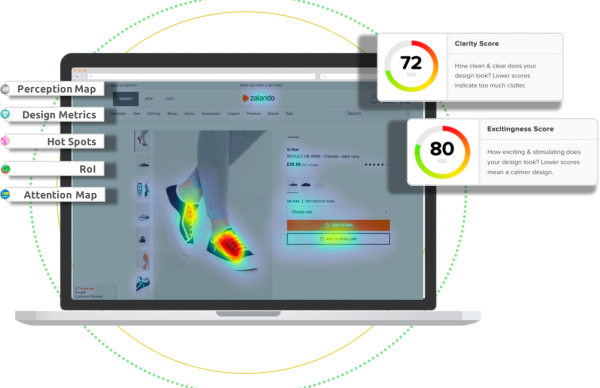We value your privacy
This website uses cookies to ensure you get the best experience on our website.
 Skip to main content
Skip to main content
This website uses cookies to ensure you get the best experience on our website.

When we set out to build EyeQuant, our primary objective was to build the world’s best tool to instantly optimize user attention on websites. Along the way, though, we found that our customers often employ our software in an additional context, using their EyeQuant results as an objective voice during face to face conversations, bridging the gap between intuition and analytics. To this end, we weren’t surprised to find that others – namely a research team at MIT – share this finding.
Ruth Rosenholtz is a senior researcher in Brain and Cognitive Sciences, and focusses her research on human visual perception and the impact of visual clutter on task performance, using computational models and behavioral studies to research user interface (UI) and information visualization (infovis) solutions. One of her main goals is to study tools that provide “guidance on perceptual aspects of design”.
In a recent field study, Rosenholtz and her colleagues collaborated with designers and design teams to determine how effective these perceptual models are in guiding the design process.While her prototypes certainly achieve this aim, they also yielded another intriguing result:
How Come?
Because quantitative design models and tools help create what Rosenholtz calls a “common perceptual language”. In other words, with a simple and objective design visualizations of otherwise intuitive and often difficult to grasp processes, designers are able to cross disciplinary communications boundaries.
At EyeQuant, our A.I. was designed to be used online, but its impact is also felt when it is used offline in design and brand meetings. Everyone in a meeting possesses their own expertise, intuitions, and personal tastes, but few have objective, compelling data to back up their arguments.
We believe that artificial intelligence and neuroscience make the designers’ and marketers’ lives easier, not just because the software we build provides highly accurate, data-driven insight into online user attention, but also because the visualizations our customers receive as results create a common language for the whole office, from marketing and sales teams to designers and developers.
When someone tests their web page with us, four predictive visualizations of initial user attention – a perception map, a heat map, a click map, and an interactive ‘regions-of-interest’ map – are instantly produced, all of which can then be easily exported to .pdf format for use in presentations and pitches.
EyeQuant is excited about our leadership role in this new field, and are currently working on features that support this use case, particularly for agencies. Stay tuned!
Image credit: http://3.bp.blogspot.com/-gSxWCdXAsOo/T4coY8Y-_EI/AAAAAAAABHs/x6EiNUzb4VY/s1600/ST-TNG-10.jpg



Check out our latest top tips on how you can use EyeQuant to spy on your competitors, analyse mobile...
Read more
In our latest blog we explore how to use neuroscience to help create higher performing digital products.
Read more
Figma is the go-to prototyping platform for many UX and web designers – and not without reason. Its functionality,...
Read more